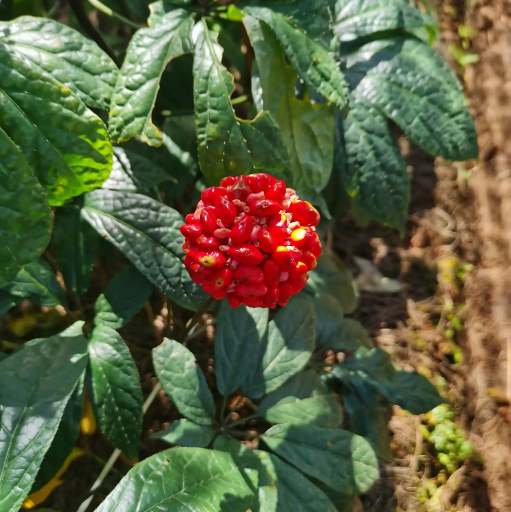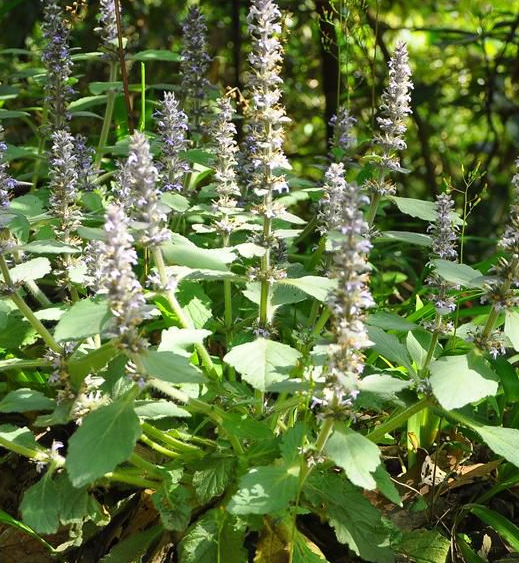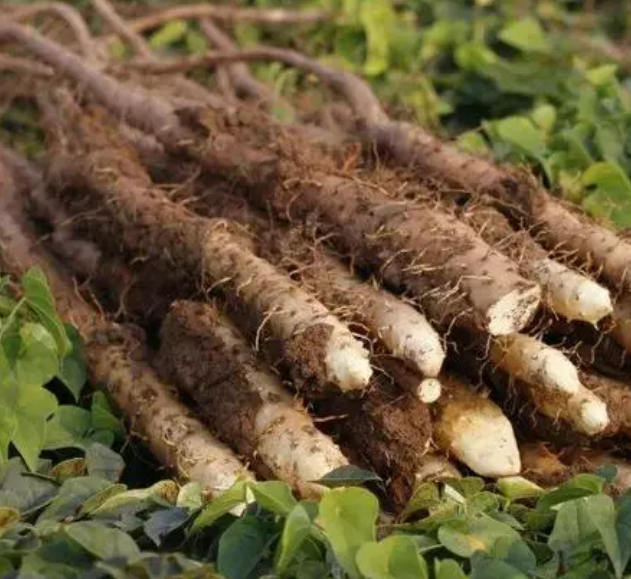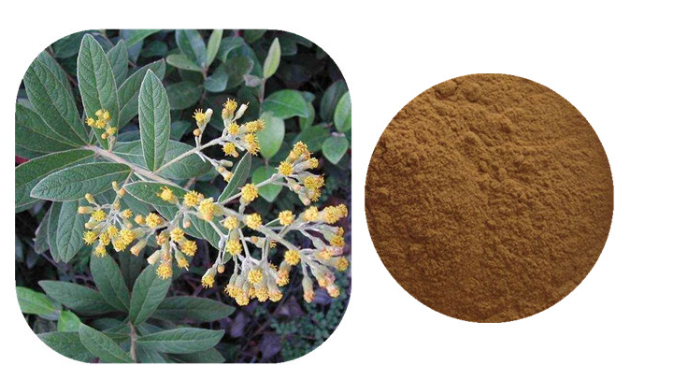Yunnan Baiyao Core Ingredients
Posted by Yunnan Baiyao USA on Mar 10th 2023
Since Yunnan Baiyao is a state-secret formula, its ingredients have always been mysterious. The 8 core ingredients were not displayed until some countries such as the United States were required by the FDA to list the ingredients. People have the opportunity to study and evaluate these ingredients.
Following is a list of core ingredients, but remember
this is going to be dependent on where you purchase it. The ingredients can be
different or there can even be more included which may or may not prove
beneficial to the user.
Notoginseng 田七 200 mg*
Ajuga Forrestii Diels 散瘀草 85 mg*
Rhizoma Dioscoreae 淮山药 66.5 mg*
Rhizoma Dioscoreae Nipponicae 穿山龙 57.5 mg*
Herba Geranii & Herba Erodii 老鹤草 36 mg*
Dioscoreae Parviflora Ting 苦良姜 30 mg*
Herba Inulae Cappae 白牛胆 25 mg*
borneol
冰片
1.Notoginseng

Notoginseng grows naturally in China. The herb is a perennial with dark green leaves branching from a stem with a red cluster of berries in the middle. It is both cultivated and gathered from wild forests, with wild plants being the most valuable. The Chinese refer to it as three-seven root because the plant has three petioles with seven leaflets each. It is also said that the root should be harvested between three and seven years after planting it.
In Traditional Chinese Medicine (TCM), aches and pains may be caused by poor blood flow. Since Notoginseng is believed to improve circulation, it may be used for pain relief.
In
TCM, the herb is widely used to treat traumatic injuries and various kinds of
bleeding. At home, Notoginseng can be used to make a drink that promotes the
healing of minor scrapes and cuts. To make the drink for adults, double-boil 2 qian (8g) of Notoginseng in
fresh water. For children, use 1–1.5 qian
(4–6g). This drink should be consumed only during the period of
recovery and should not be used over the long term.
2.Ajuga Forrestii Diels

Other Names: Boea Clarkean; Ajuga pantantha;
The drug is the dried or fresh whole herb of Boea clarkeana Hemsl. (Family Gesneriaceae), growing on mountainous areas, on rocks on hillsides, on rock cliff in ravines or along creeks, and distributed in Shaanxi, Anhui, Zhejiang, Hubei, Sichuan and Yunnan of China.
Boea
Clarkean is used as antipyretic, hemostatic and antioncotic, to remove blood
stasis, for the treatment of chronic infantile convulsions, externally for
traumatic injury and bleeding.
3.Rhizoma Dioscoreae


Mainly produced in Henan. It is excellent which produced in Henan, called Huai Shan Yao. Also produced in Hebei and Shaanxi provinces in China.
Sweet, neutral; spleen, lung and kidney meridians entered.
A. Spleen qi deficiency syndromes
It is indicated for poor appetite with loose stool, diarrhea due to spleen qi deficiency, especially for both spleen qi and yin deficiency, or needing tonifying but failure in transportation of spleen due to weakness after illness, because it can tonify both qi and yin of spleen, and it is astringent in property. For dual usage of food and medicine, neither dry nor greasy in property, it is applied singly, or taken as food for long term. For serious cases of qi deficiency, it is commonly combined with qi and spleen tonics, because it is mild in action. For instance, it is used with Ren Shen and Bai Zhu in Shen Ling Bai Zhu San from Tai Ping Hui Min He Ji Ju Fang for poor appetite with loose stool, and in Wan Dai Tang from Fu Qing Zhu Nv Ke for leukorrhagia due to down-pour of damp-turbid caused by spleen deficiency and failure in transportation.
B. Lung qi deficiency syndromes
It can tonify both qi and yin of lung directly, and tonify metal (lung) through tonify earth (spleen). For cough with little sputum or no sputum, shortness of breath, and spontaneous sweating due to lung qi and yin deficiency, it is commonly combined with herbs of tonifying qi, nourishing yin, moistening lung, relieving cough. For instance, it is used with Dang Shen, Mai Dong and Bai He. It is indicated for cough and dyspnea due to qi and yin deficiency of lung and kidney, because it can tonify qi, and nourish lung and kidney. It is usually combined with herbs of tonifying kidney, astringing lung, receiving qi and relieving dyspnea. For instance, it is used with Shu Di Huang, Shan Zhu Yu and Wu Wei Zi in Qi Wei Du Qi Wan from Zhang Shi Yi Tong (Zhang’s Medical Experience Collection).
C. Kidney deficiency syndromes
It is indicated for deficiency of yin, yang and essential qi of kidney, because it can tonify kidney qi and yin, and also has the action of astringing. It is occurred in many famous formula of kidney tonifying and combined with kidney tonics and astringents. It is indicated for soreness and weakness of lumbar and knees, frequent urination, enuresis, seminal emission, premature ejaculation, leukorrhagia in thin quality due to kidney qi deficiency, emaciated, soreness and limpness of lumbar and knees, seminal emission due to kidney yin deficiency, for instance, it is used in Liu Wei Di Huang Wan from Xiao Er Yao Zheng Zhi Jue, which is famous for tonifying kidney yin, and in Shen Qi Wan from Jin Kui Yao Lue, which is famous for tonifying kidney yang.
D. For diabetes due to both qi and yin deficiency
It is indicated for diabetes
due to both qi and yin deficiency, because it can tonify both qi of spleen,
lung and kidney, and yin of spleen, lung and kidney. For diabetes in slight
degree, it is decocted singly and taken instead of tea. For diabetes in serious
degree, it is combined with herbs of tonifying qi, nourishing yin, clearing
heat, producing fluid. For instance, it is used with Huang Qi, Tian Hua Fen and
Zhi Mu in Yu Ye Tang from Yi Xue Zhong Zhong Can Xi Lu.
4.Rhizoma Dioscoreae Nipponicae


Property
Bitter, neutral; liver and lung meridians entered.
Actions
Dispel wind-damp, clear lung, induce diuresis and eliminate phlegm.
Indications
Rheumatalgia, bronchitis, sudden
sprain in the lumbar region, traumatic injury.
5.Herba Geranii & Herba Erodii
Other Name : Cranesbill


Property
Pungent, bitter, neutral; liver, kidney and spleen meridians entered.
Actions
Expel wind and activate blood, clear heat and remove toxicity.
Indications
Traumatic injury,
dysentery, sores and boils, rheumatic arthritis, muscular constriction,
numbness.
6.Dioscoreae
Parviflora Ting

It is the rhizome of
Dioscorea parviflora C.T.Ting. Distributed in Hushui, Yongsheng, Luquan,
Kaiyuan and Maitreya in Yunnan. It has the effects of clearing away heat and detoxification,
promoting blood circulation and reducing swelling. It is often used for
carbuncle furuncle swollen poison, soft tissue injury, bee sting and insect
bite.
7.Herba
Inulae Cappae

Born in barren hills, hills, grass below the mountainside, or bushes. Distributed in Jiangxi, Fujian, Hunan, Sichuan, Guizhou, Yunnan, Guangxi, Guangdong, Hainan Island and other places.
It mainly contains flavonoids,
amides, anthracenes, organic acids and other ingredients. It has
anti-inflammatory, analgesic and anti-pathogenic microorganism effects.
8.Borneol

Dryobalanops aromatica Gaertn. f. is mainly in southeast Asia, introduced one is in Taiwan province of China, and Blumea balsamifera (L.) DC. is mainly in Guangdong, Guangxi and Yunnan provinces of China.
The traditional Chinese medicine
borneol is pungent and bitter in taste and slightly cold in nature. Guixin,
spleen, lung meridian. It has the effects of resuscitating and refreshing,
clearing away heat and relieving pain. Because borneol is slightly cold in
nature and bitter in taste, pregnant women should use this drug with caution,
so as not to affect the fetus.
*Both the blue packaging (North American packaging) and the green Chinese packaging are the same formula and same product but different packaging.

